Magical World #25: architecture, design & technology at the New Institute
First time is always special
When you go somewhere new, there are always so many things happening at the same time. I would be very curious to know if any of you have this similar experience: for me, very often, I start enjoying things and places and even animals or people more, when I get to know them better.
With new places, there is so much to take in on all levels: what's the building like, where do I go in, where do I get my ticket, how are the galleries organised, where do I start? What am I supposed to take away from this - is it about learning and information or about art and being amazed or about fashion and culture and forming an opinion?
These questions probably don't come up in every situation. But today I visited the New Institute, one of the museums of Rotterdam, for the first time. And it was an interesting, slightly confusing experience. I'm sort of still figuring out what to make of it, and sharing my thoughts with all of you is my plan for getting them organised. So I'll be able to make up my mind whether or not this place deserves a second visit ;).
Getting acquainted
Whomever or whatever I meet for a first time, at that moment of first impressions I'm fully occupied with processing. And the processing doesn't lead to any tangible results, just yet. Like when you meet someone and they tell you their name and then one minute later I'm like, what is your name again? Same way, I didn't take any pics from outside the New Institute, or the entrance hall. That was all still processing time I guess. It was only when I had found my way into the first gallery and had a rough idea what the topic was about, that I got comfortable taking some pictures.
The first hall's topic was Dissident Gardens. A video was running showing technology in agriculture, telling about the contrast between the human need for control and optimisation and the need for the powerful forces of nature to enfold as they are. About how we want nature to be nature, yet we want to be in charge. About how our agricultural practices are shaping landscapes, how all the greenhouses and containers and modern production facilities are architecture too.
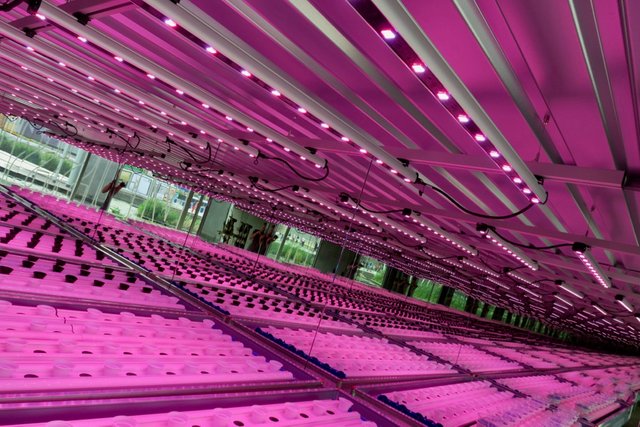
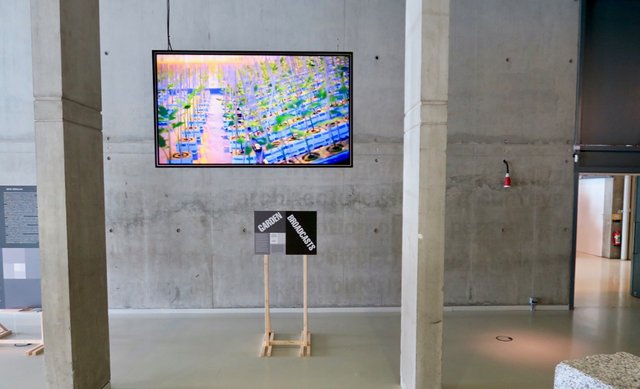
Alien territory
We want to shape nature, the way we are shaping nature is changing the face of our planet. But we are looking beyond earth to exert our influences. Next in the Dissident Garden theme was Mars, and how scientists are looking at this planet as a second earth, as a possible hub from which to expand our presence in the galaxy, as a resource when we've used up what is available here.
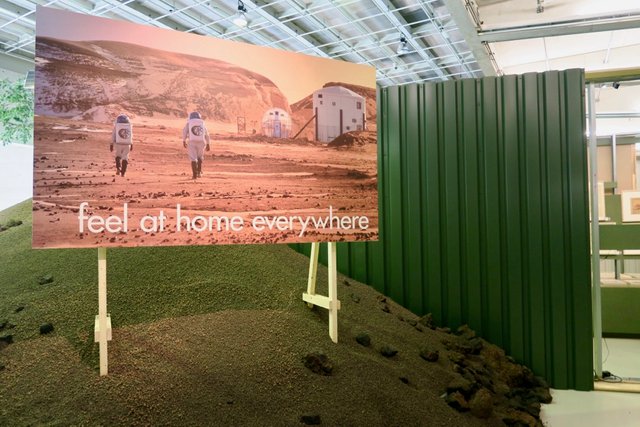
Fashion and agriculture
Technology also allows us to use the planet's resources in new ways. A section of the Dissident Garden exposition was dedicated to materials which are being developed (grown) by biologists, chemists and fashion designers. Using organisms like seaweed, bacteria and fungus for growing and producing new kinds of textiles and materials.
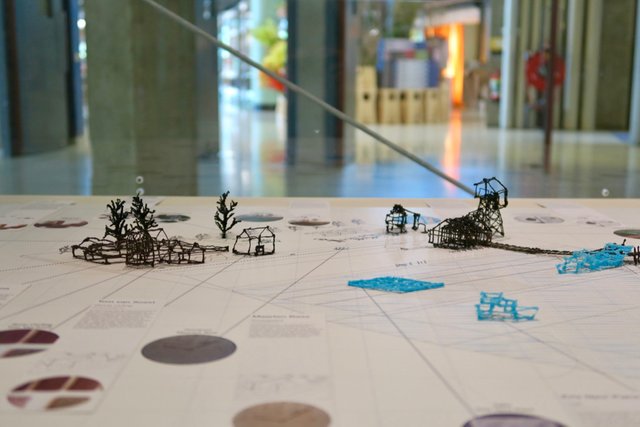
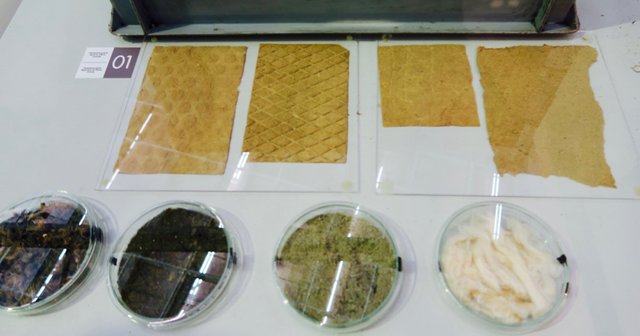
Tiny houses before they were a thing
Next topic in studying the relationship between nature and culture is holiday parks. With more than 1500 holiday parks, Netherlands has the highest density of holiday parks in the world. Holiday parks have changed our relationship with the outdoors, as they fulfil the need for spending time in and with nature, but in a controlled environment. The museum had a collection of models of holiday homes and parks and articles and information on the topic from the 1920's onwards, when holiday parks first became 'a thing'.
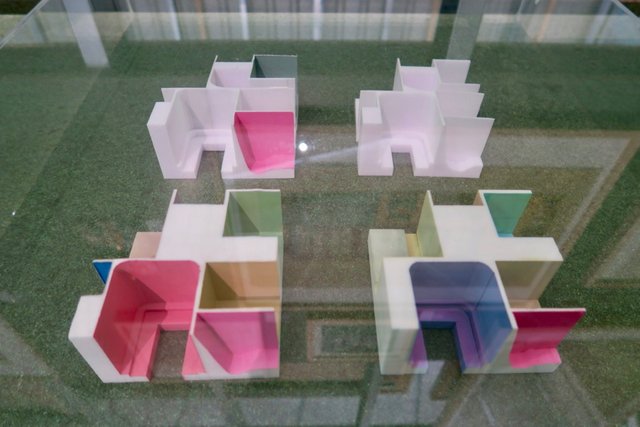
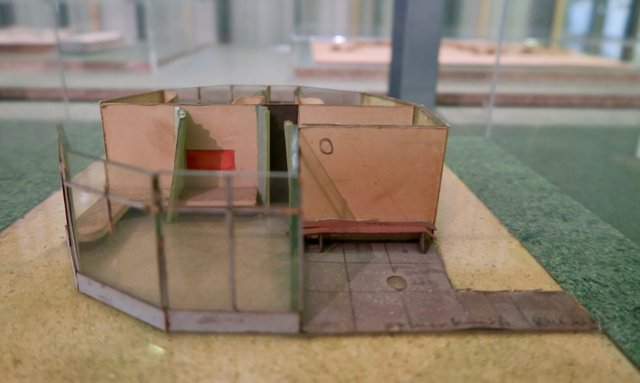
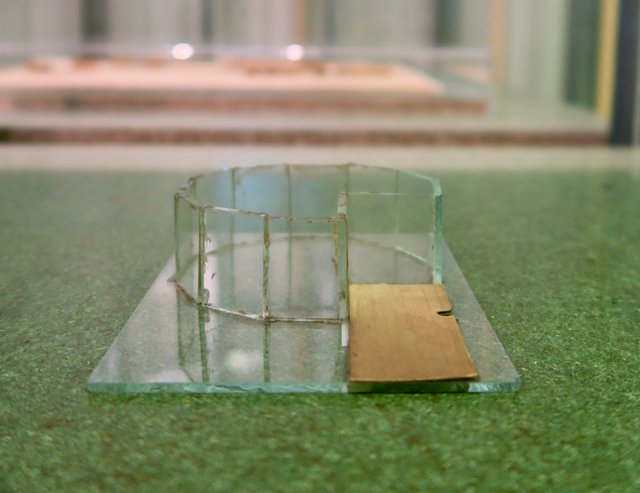
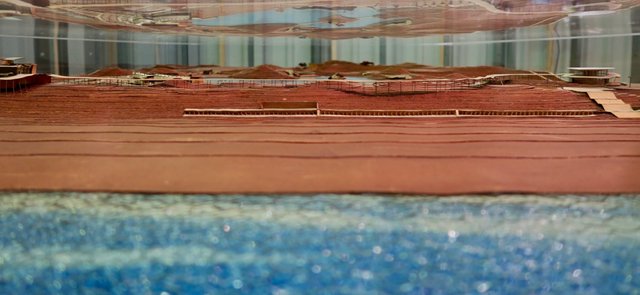

After making my way through that first hall, I was still a little confused about many things. What was the main topic here - architecture, technology, science? Was the intention to inform me, to educate me, to amaze me, to stretch my ideas about what is possible, to help me form a personal opinion? See, I enjoyed walking around there - the hall with its industrial feel, the colourful items lined up in it, the futuristic outlandish elements, the collection of 1920's models and infographics. All of it was beautiful enough, and put together in such a way that I'd have enjoyed it as an art exhibition. But there was info too - some of it about technology already in place and happening, some of it about technology which might someday be part of our reality. Was this history, future, possibilities, dreaming? At this point in time, I was definitely still in the awkward situation of not really knowing what I'm in for.
Insects, antennae, radio
We moved towards the next exhibition hall. For which we had to go up a few of these halls, all lined with globes with insects on display.
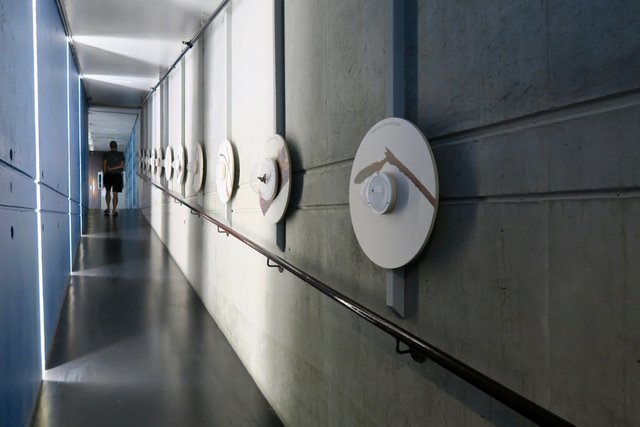
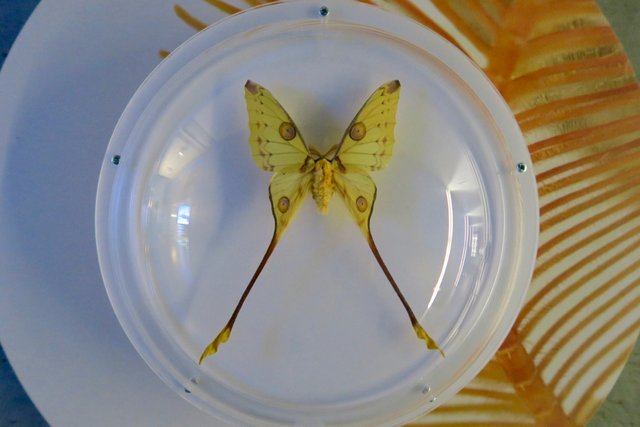
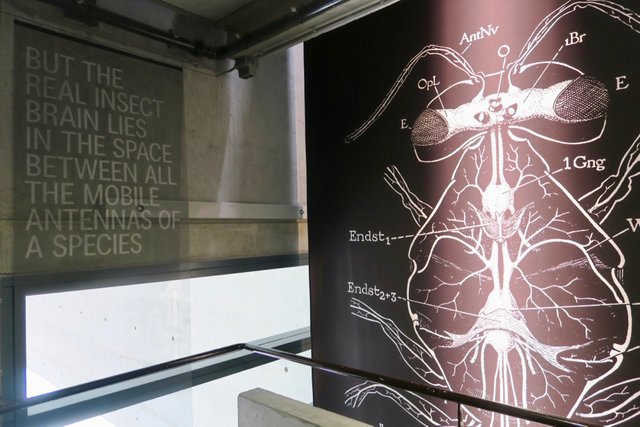
Insects, antennae, radio and architecture
There was this extremely red hall, with pictures of radio stations and radio towers along the sides.
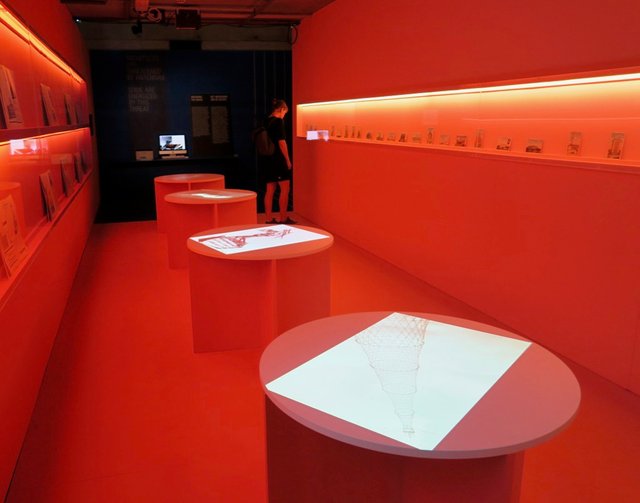
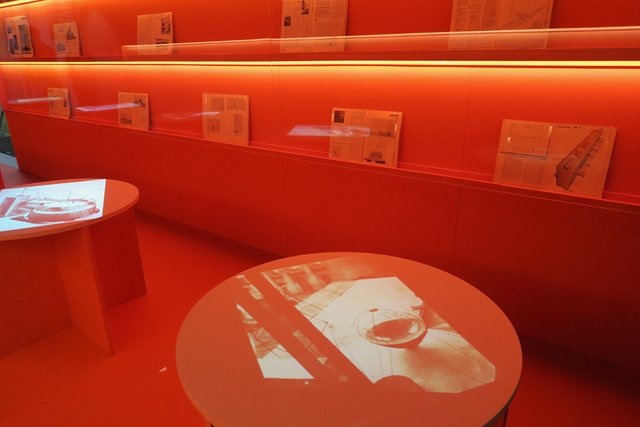
Then we moved to this very blue hall, which had a timeline along the wall, showing a collage of events related to radio technology and architecture design.
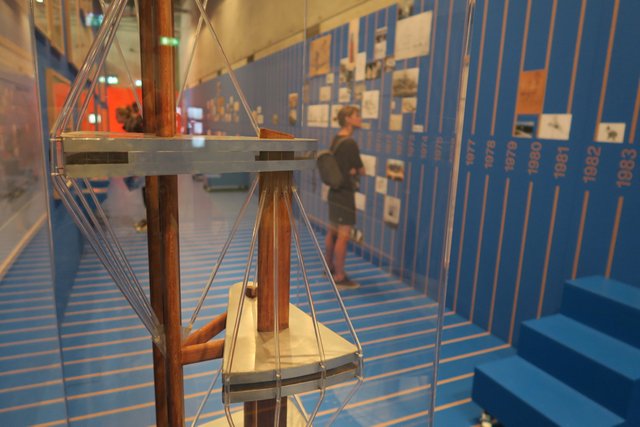
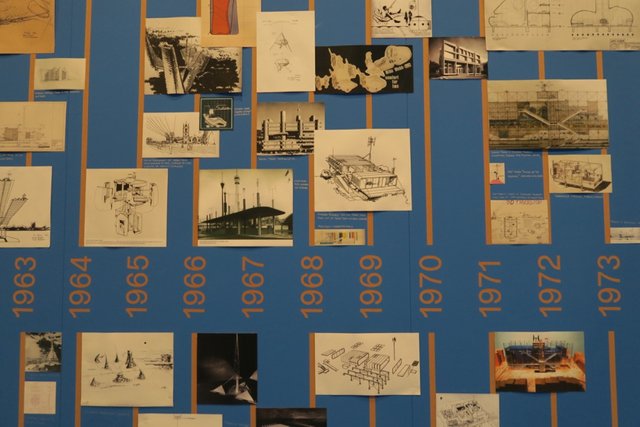
Antannae from the future
Around the next corner was a display of what seemed like artist impressions of architecture of the future, but then the future as architects and artists were imagining it early in the 20th century. This art was selected for how the artists had made antennae a main feature in their design.
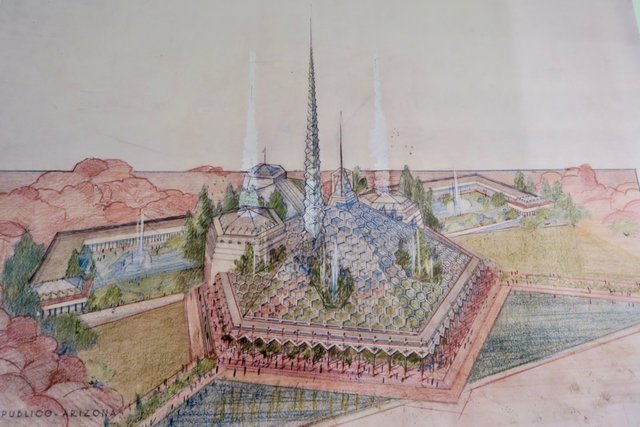
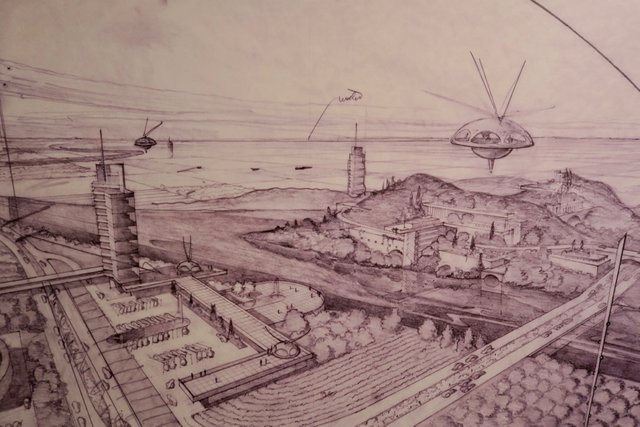
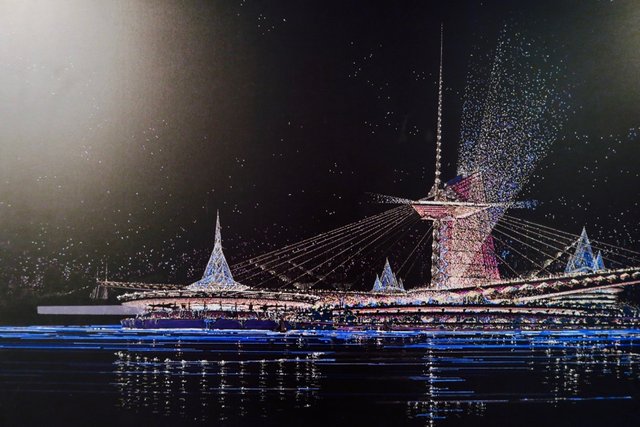
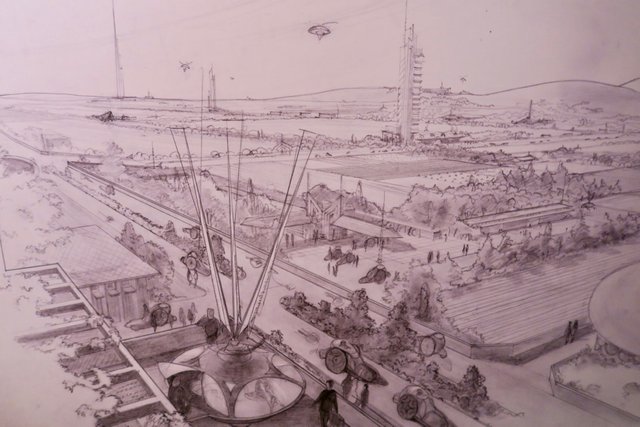
These artists were right, in a way, with how they envisioned the future. Radio waves are essential to our current way of living, antennae are everywhere. The final part of this exhibition was a display of 'antennae items' made in fibre glass. Couldn't get it on picture. It had two timelines, on either side of the wall. To the right, showing the size (in scale) of the largest antennae and radio stations we've built so for, with units larger than 500 meter gazing deep into space. And to the left, a time line for antennae getting smaller and smaller, ending with a portable Nokia from 1999 with its antenna built in.
At the end of the hall there was this contemplative text. It was a rather long piece of text, and I took a picture of it but that didn't turn out well, but I'll type it our because I feel it shows exactly what kind of topic and perspective and thinking and style was going on at this place:
We are completely suspended in a dense living ecology of antennas. There are antennas in your pocket and on the walls of your apartment, appliances, remote controls, luggages, keys, watch, cameras, car, pets and products. Antennas are on buildings, streets, trees, fish, birds, ships, trucks, planes, packages, drones, missiles, mountain tops, ocean bottoms, rivers, mines, fault lines, and satellites. They are in the two Voyager spacecraft travelling 1.5 million kilometres away from us a day that extend our sensitivity ever deeper into interstellar space and in the recently legalised pills that now send a signal when their outer layer dissolves in the stomach to tell your watch to tell the doctor that you have taken the right pill at the right time.
All these countless antennas are interconnected through the single largest physical object our species has ever produced: the global communications infrastructure that is larger than the planet, uses unimaginable amounts of energy and is implicated in almost every economy and interaction, yet is largely invisible. Everything we make starts to have an embedded antenna, like the billions of objects already with RFID tags, along with more and more of the organic world. There is no longer a line between the barely visible antenna and the visible world. What we see and how we see is the product of our new feelers. What we think and how we think is determined by radio waves. The human species has embedded itself into the very fabric of the world by breeding new antenna. Ot is it that we have been bred by “our” antenna?
At this point (now, while writing my post and reflecting on the afternoon's experience) I start liking the New Institute. The link between radio waves and insects and their antennae, the biology aspect. The technology of radio waves, the architecture and design of the buildings and items that carry those antennae. The artist impressions of the future, from the past, showing dreams of an earlier era and putting them next to a timeline of developments that shaped a very different, yet not so different reality. God, they put a whole lot of perspectives, topics and fields of knowledge together. It's informative, it makes you question things, wonder about things, it shows you the interconnectedness of so much, and all of it is displayed in a way that makes it art by itself.
Information overload
There were two more galleries. One on weeds, and their properties. There were 30 different kind of weeds hanging from the ceiling - a description of properties in old encyclopedia style together with the seeds of that specific weed. They organised workshops for kids, inviting them to rethink those weeds, and how they could put them to use. There were materials for crafting and the kids could some seeds home with them and put their idea to work.
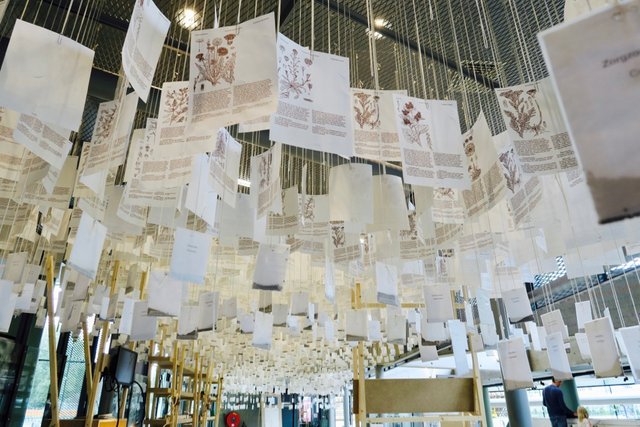
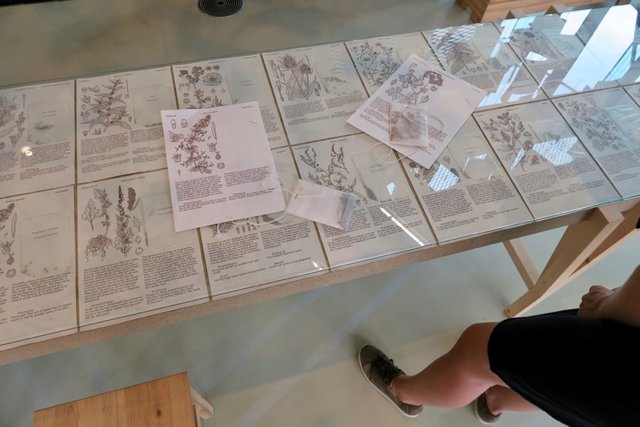
The final exposition on the top floor was on a way more political topic. Typically not my favourite. Or maybe I was just getting close to information overload. Something about Obama and the tea party and propaganda and such. I can't tell you if that hall was any good - I walked right through it. This was a whole new topic, and I was still confused about what to expect from the place.
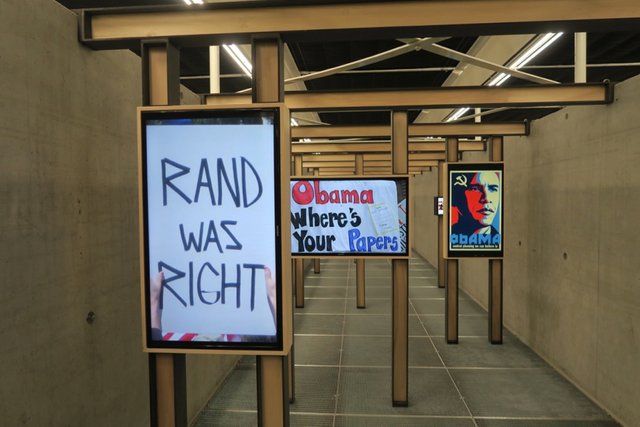
What about a second date?
In this first visit there was so much to figure out, so many impressions. I think half of my energy went into figuring out the context to the experience I was supposed to be having. I think that is also a personal thing, just the way my mind works, always trying to find out from what paradigm to make sense of stuff. If you are anything like me, then this New Institute will give you some struggle. It's just not so straight forward. It mixes everything with anything and doesn't box it up at all. Which might result in a bit of a challenging afternoon at the museum, but just might also make your visit worth its while.
Did you actually make it through this post all the way to the end? I'm proud of you if you did. I feel even this post turned out rather dense and confusing, lol. But it definitely served its purpose of getting my thoughts organised. And yes, I do believe it would really be worth it to try this place again. When the first impressions have settled a little and I'm a bit more clear on what to expect and how to approach the place, I think there's a lot more fun to be had :).
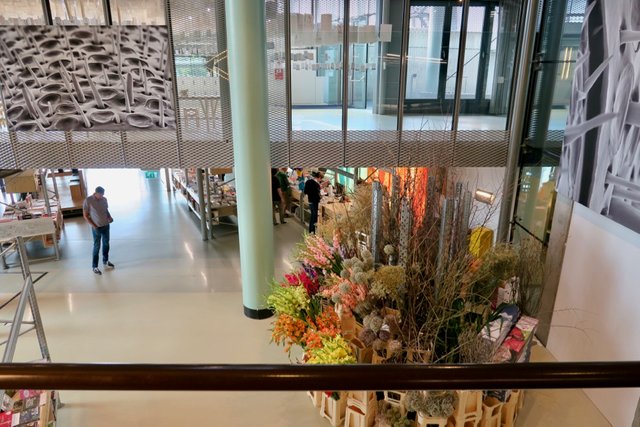
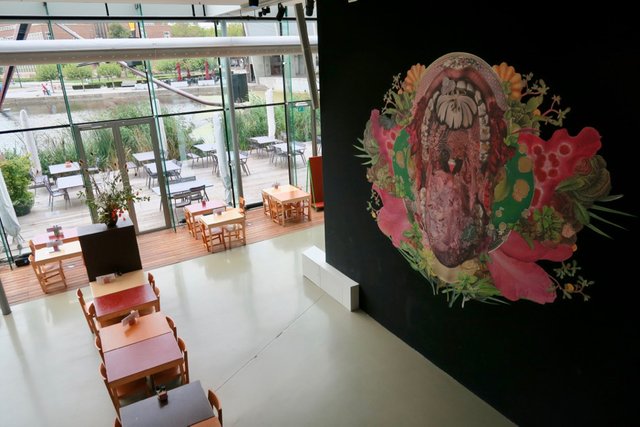
Magical World Series
This is post #25 in the Magical World Series. With these posts, I hope to add a little happiness and light-heartedness to your day. There is magic in every little corner of the world. And if we share it with each other, it does really brighten up the place!
Some earlier posts in this series:
All content is created by me (with a little help from my husband for photography), and Steemit original.
Camera: Canon G7X. Thanks for your support!
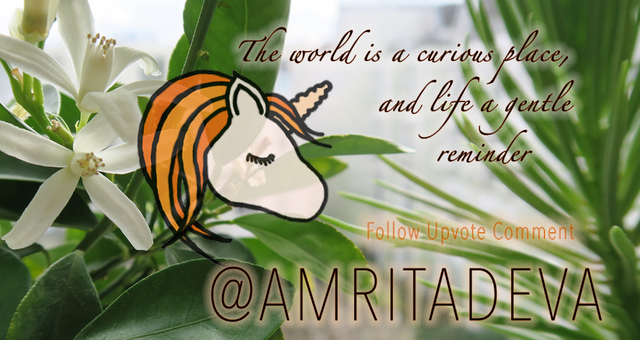
Congratulations! This post has been upvoted from the communal account, @minnowsupport, by amritadeva from the Minnow Support Project. It's a witness project run by aggroed, ausbitbank, teamsteem, someguy123, neoxian, followbtcnews, and netuoso. The goal is to help Steemit grow by supporting Minnows. Please find us at the Peace, Abundance, and Liberty Network (PALnet) Discord Channel. It's a completely public and open space to all members of the Steemit community who voluntarily choose to be there.
If you would like to delegate to the Minnow Support Project you can do so by clicking on the following links: 50SP, 100SP, 250SP, 500SP, 1000SP, 5000SP.
Be sure to leave at least 50SP undelegated on your account.